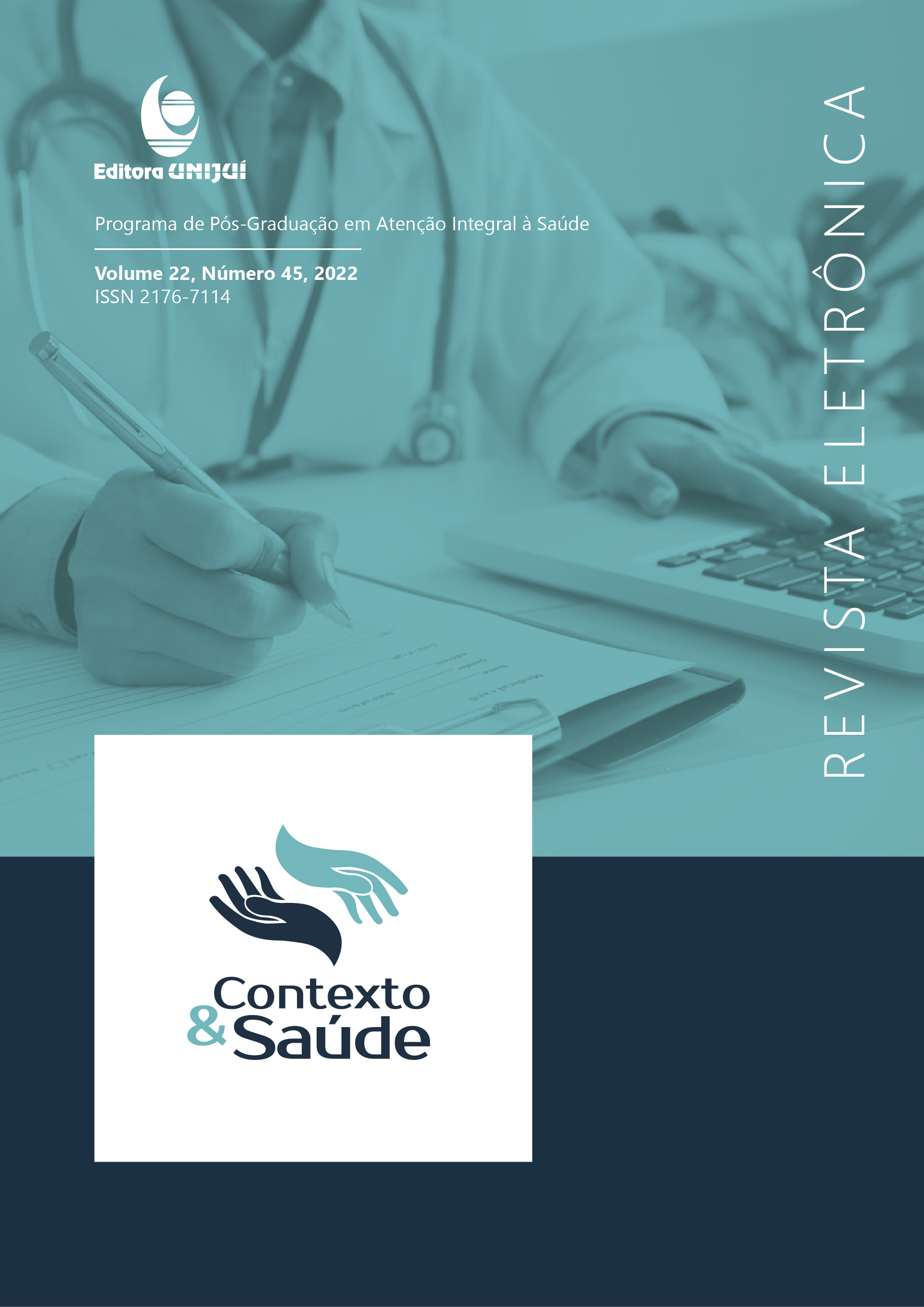Sociodemographic, labor, lifestyle and nutritional status characteristics associated with low hdl-c concentration in steelmakers
DOI:
https://doi.org/10.21527/2176-7114.2022.45.11837Keywords:
Palavras-chave: HDL-c, Estilo de Vida; Inatividade Física; siderúrgico.Abstract
Objective: To evaluate how sociodemographic, labor, lifestyle and nutritional status characteristics associated with a low concentration of HDL-c in steelmakers. Method: This is an observational, analytical and cross-sectional study that evaluated the association between independent variables (sociodemographic, labor, lifestyle and nutritional status) and dependent variable, HDL-c of steel workers. The sample consisted of 317 male employees with a mean age of 36.3 ± 10.05 years. The binary logistic regression model with the Enter selection method was used to test associations between the independent variables and HDL-c (low versus adequate). For this model, the assumptions of absence of multicollinearity, minimum sample size for the number of variables in the model, absence of outliers and adjustment of the model according to Hosmer-Lemeshow were taken into account. Results: After multiple analyzes, it was found that with increasing age, the greater the inadequacy of HDL-c levels (OR 1.11, 95% CI 1.06 - 1.15, p <0.001), while those who worked 12 hours or more were 74% less likely to have HDL-c below the recommended (OR 0.26, 95% CI 0.08 - 0.81, p = 0.020). When assessing life habits, it appears that insufficiently active employees 3.52 times more likely to have HDL-c below the recommended (OR 3.52, 95% CI 1.40 - 8.89, p = 0.008). Conclusion: The evolution of age, daily working time and also physical inactivity are associated with a low concentration of HDL-c in the steel sector among the workers studied.
Downloads
Published
How to Cite
Issue
Section
License

This work is licensed under a Creative Commons Attribution 4.0 International License.
By publishing in Revista Contexto & Saúde, authors agree to the following terms:
The works are licensed under the Creative Commons Atribuição 4.0 Internacional (CC BY 4.0) license, which allows:
Share — to copy and redistribute the material in any medium or format;
Adapt — to remix, transform, and build upon the material for any purpose, including commercial.
These permissions are irrevocable, provided that the following terms are respected:
Attribution — authors must be properly credited, with a link to the license and indication of any changes made.
No additional restrictions — no legal or technological measures may be applied that restrict the use permitted by the license.
Notes:
The license does not apply to elements in the public domain or covered by legal exceptions.
The license does not grant all rights necessary for specific uses (e.g., image rights, privacy, or moral rights).
The journal is not responsible for opinions expressed in the articles, which are the sole responsibility of the authors. The Editor, with the support of the Editorial Board, reserves the right to suggest or request modifications when necessary.
Only original scientific articles presenting research results of interest that have not been published or simultaneously submitted to another journal with the same objective will be accepted.
Mentions of trademarks or specific products are intended solely for identification purposes, without any promotional association by the authors or the journal.
License Agreement (for articles published from September 2025): Authors retain copyright over their article and grant Revista Contexto & Saúde the right of first publication.

